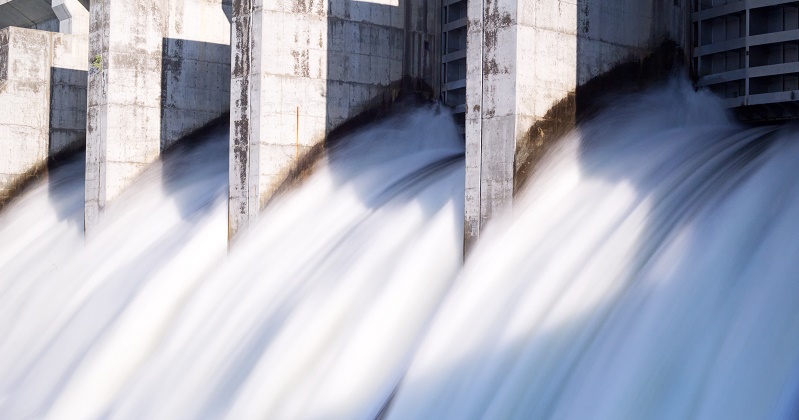
In recent years, dam failures across the US–including the Oroville emergency spillway in California, (2017), Spencer Dam in Nebraska (2019) and Edenville Dam in Michigan (2020)–highlight the critical impact of aging infrastructure on catastrophic flooding outcomes.
Nearly a third of dams are owned by governments or public utilities, while states are responsible for 80 percent of inspections, according to the Federal Emergency Management Agency (FEMA).[i] A report from the American Society of Civil Engineers indicates that the average age of all dams in the US is close to 60 years.[ii]
Follow-on studies from the Oroville Dam failure by the Army Corps of Engineers warned that the Prado Dam[iii] is at high risk of failure and would have an inundation footprint from Newport Beach to Anaheim, California, a distance of as much as 20 miles. Major public work efforts are reinforcing the Isabella Dam,[iv] 40 miles northeast of Bakersfield, California.
High-hazard potential dams are not necessarily those at major risk of failure, but rather those that would have an outsized impact if they did fail. The Association of State Dam Officials estimates that there are 15,500 dams with high-hazard potential, and that it would cost USD 70 billion to rehabilitate them and make them safe. Levee and dam failures will likely expose a lack of adequate insurance and highlight the protection gap of uninsured and underinsured mortgage borrowers, potentially impacting the US housing finance ecosystem.
Climate change is driving a range of physical and transition risks for infrastructure. An updated view of the acute and chronic physical risks facing an asset is required for mitigation plans to be put in place to ensure service reliability and community safety.
Infrastructure owners and operators should prepare to invest in hazard and vulnerability modeling to quantify present-day and future impacts of natural catastrophes under multiple climate change scenarios. These models can inform the design of adaptation measures and resilience investment programs, and support first-response and crisis management. Results from such tools can be incorporated in project planning, thus increasing the confidence governments, lenders, and investors have in the long-term financial sustainability and resilience of assets.
The output of hazard models can also offer reliable information to be used in reporting on physical risks whenever this is required, for example in generating data for crisis and scenario stress-testing that can be shared with regulators. In the wake of a catastrophe, climate-resilient infrastructure can help contain damage and disruption, thus helping manage reputational and liability risks.
At Guy Carpenter, we are helping our clients assess and quantify their climate change physical risk through a variety of methods. We provide briefings summarizing the extensive science on extreme weather and climate change. We have a broad overview of market practices that can help clients benchmark their own activities. For the quantification of the risk, Guy Carpenter has developed proprietary tools ranging from underwriting and accumulation layers, to adjustments to third-party catastrophe models to in-house probabilistic models developed for climate change.
Read more about risk to infrastructure in the report: Built to Last: Infrastructure and Trust in a Changing World, from Marsh McLennan.
[i] https://www.fema.gov/emergency-managers/risk-management/dam-safety/resources-states
[ii] https://infrastructurereportcard.org/cat-item/dams/
[iii] https://www.latimes.com/local/lanow/la-me-ln-prado-dam-flood-risk-failure-20190516-story.html
[iv] https://kernpublicworks.com/building-and-development/floodplain-management/lake-isabella-flood-area/